Mass Victim Attacks: Are You Prepared?
*This is an article from the Spring 2021 issue of Combat Stress
By Gary M. Jackson, PhD

Usually referred to as a Mass Casualty Attack, I use the term, Mass Victim Attack. Why? Although there are different definitions of the term casualty, most refer to deaths or physical injuries. A mass attack results in different types of victims – ranging from those who were killed, physically injured, and those who suffer severe emotional grief and distress. If we add emotional distress, often severe enough to be diagnosed as PTSD, it is clear that mass victim attacks result in devastating effects, far outnumbering deaths and physical injuries.
A mass victim attack is one in which a person or persons attack a group of people at one time resulting in three or more fatalities. Are you, family members, and friends prepared for a mass victim attack? There are two primary reasons why the answer could be no. First, we do not want to focus on the unthinkable. That is normal. It is called denial; but denial is not proactive and certainly not preventative. Second, we tend to believe that mass attacks are a low probability event and we are not likely to be affected. If, however, you are unfortunate enough to be caught in such an attack, the probability is 100 percent.
Mass victim attacks are usually directed against random targets – targets based on race, religion, co-workers, and public gatherings of all kinds, including schools, stores, malls, sports events, concerts, churches, mosques, synagogues, streets, walkways, bars, restaurants, and government and military groupings, to mention a few. There is the potential for any group of any kind in any location of being the target of a mass victim attack.
Some events, even if low probability statistically, are so disastrous that we have imposed preventative measures to reduce the risk of fatalities or devastating injuries. This is the reason why there are mandated seat belt requirements and safety instructions on airliners, although it is the safest form of travel by far statistically speaking. We have seat belts and air bags in motor vehicles to reduce the probability of death and injuries – yet over 40,000 died in auto accidents in 2020. Even if a low or moderate probability event, statistics do not apply if you are caught in such an attack.
From the infamous 9/11 attack to the Fort Hood Massacre, to the Pulse Nightclub Attack, to the Sandy Hook Elementary School Massacre and to the many hundreds of other mass attacks, innocent victims of all ages lost their lives to attackers motivated for a variety of reasons. However, regardless of the underlying motivations, the results were the same – innocent victims in a group lost their lives or were maimed in the most horrific attacks imaginable.
As I was preparing this article, on March 22nd of this year, a single gunman dressed in tactical gear and armed with two semi-automatic handguns approached the Kings Supermarket in Boulder, Colorado. He began firing in the parking lot and continued inside the store. Before he was apprehended, he had killed 10 people, ranging in age from 20 to 65, including a responding law enforcement officer. Six days earlier on March 16th a single gunman killed eight innocent victims across three spas in Atlanta, Georgia. Although I have researched this topic for a decade, written a book on the topic, and have written articles and conducted interviews on this subject matter, mass attacks appear to occur as fast as I can write. Mass attacks have been with us for decades, continue to be with us, and will persist into the future. If they are difficult to predict or prevent, we can at least be prepared to increase our chances of survival.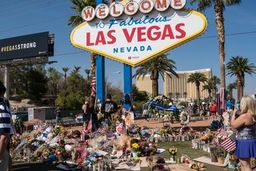
What can we expect during a mass attack? There is total chaos — screaming, running, weapons being used to basically slaughter and maim, crying, begging, first responders entering a confusing scene, and death and destruction accompanied by much blood and immediate suffering. Such attacks leave a wake of family and friends suffering from grief lasting a lifetime. Although we tend to think of the numbers – the number killed and physically wounded – we do not see the numbers of those who suffer otherwise.
The long-term post-traumatic stress disorder (PTSD) effects of being a survivor, or one who witnesses the atrocity but not physically injured, can be devastating and last from months to decades, if not a lifetime. There can be frequent distressing thoughts, disturbing dreams, flashbacks in which the affected person feels and acts like he or she was there, and fear and avoidance of situations that are similar, as well as other symptoms. Basically, the effects of mass attacks are far more widespread than what is reported or even assumed. The reported number of those killed and wounded in an attack is devastating, but this is not the end of the suffering. This is just the beginning.
Dissecting Mass Attacks
To prepare and be ready, we need to know more about mass attacks; we must know more about attackers, the methods of attack, target locations, and underlying motivators driving such attacks. What type of person would plan to needlessly slaughter multiple innocent people at one time – often at random? There is no real type. However, we do know that there are five primary categories of attackers: International Terrorists, Domestic Terrorists, Self-Radicalized Terrorists, those fueled by immeasurable hate, and those suffering from mental health disorders. These may be defined in the following manner: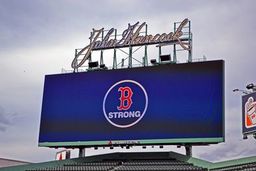
- International Terrorist. A non-U.S. citizen who attacks multiple, innocent and often random victims with the objective of making a political, religious, ideological, or anti-U.S. statement.
- Domestic Terrorist. A U.S. citizen who attacks multiple, innocent, and often random victims within his/her own country. Often there is an objective of making a statement about “getting back” or revenge for a perceived injustice.
- Self-Radicalized Terrorist. A U.S. citizen who attacks multiple, innocent and often random victims, and who is typically not recruited, but embraces the ideology, tactics, and messaging of a radical Islamic international terrorist organization.
- A U.S. citizen who attacks a group of innocent victims because of significant prejudice or bias and inordinately strong anger against that specific religious, racial, ethnic, or other despised group.
- Mental Health Disorders. An attacker suffering from severe, mental health disorders in the form of paranoia, delusions, or fantasy driven to kill multiple people in one event – it is often difficult to clearly understand the internally-generated motives.
We also see crossovers, or hybrids (e.g., an attacker who attacks on the basis of hate and also has a mental health disorder).
To add to the complexity, mass attackers use a variety of weapons:
- Sharps (knives, machetes, hatchets),
- Semi-automatic high-powered pistols and rifles,
- Improvised explosive devices (IEDs) both large and small scale (Large Scale – the April 19, 1995 Oklahoma City bombing involving high explosives in a truck, and Small Scale – Boston Marathon bombing with explosives packed in two pressure cookers), and,
- Vehicles used for rundowns.
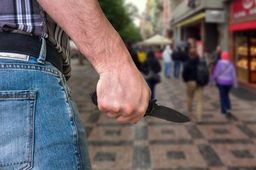
Are guns the cause of mass attacks? To look for the causes, we must look to the attackers and underlying motivations and not just to weapon type. The above-mentioned weapons have all been the weapon of choice in multiple mass attacks. The terrorist group, Al Qaida, responsible for the 911 attack, has stated in their massively distributed online documents (Inspire magazine, Al-Qaida Manual, messages, etc.) that if typical weapons are not available (e.g., guns), then use rented vehicles to run over and kill victims. The terrorist group ISIS has repeated this message. If there are no guns, mass attackers will still have sharps. IED’s and vehicles to engage in mass attacks.
The 911 attack weapons first consisted of box cutters to threaten flight crews in order to hijack the four loaded-fuel airliners. They then used the airliners in suicide missions to kill 2,977 innocent people. We cannot underestimate the creativity of mass attackers in methods to achieve their goal and objectives. Time, the element of surprise, and willing acceptance of death as a consequence of their actions contribute greatly to the too often long list of casualties. No, guns are not the cause; they are a weapon of choice to carry out a mass attack just like sharps, IEDs, and vehicles. Obviously, all weapons of choice cannot be banned – if so, we would just witness the surfacing of other types of weapons such as chemical, biological, radiological, or nuclear (CBRN) weapons.
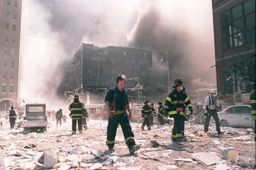
Commonalities
Although categories of attackers have major differences across motivations, targets, locations, methods of attack, and weapons used, there are some commonalities across all mass attackers. Any form of terrorism (i.e., international, domestic, or self-radicalized) involved in a mass attack results in leaving a form of anti-U.S. message, be it focused on actions of the U.S. government, military, perceived global reach, economic power, or simply revenge for some perceived injustice. The message may not be written. The selection of a U.S. target may be the message. Perhaps the most single important commonality of all mass attackers is that, regardless of who the attacker is and what type of attacker, they all have the same objective – kill and maim as many innocent victims as possible in a group in the shortest amount of time.
Have Mass Attacks Been Prevented?
Can mass attacks be prevented? The answer is absolutely yes. There are many scores of examples of likely attacks that were prevented. How? There are two major reasons as to how intervention prevented likely or imminent mass attacks: (1) astute observations of suspicious behavior by law enforcement who investigated and found weapons, planning and intent to harm, and (2) tips provided to law enforcement by observers who noticed something suspicious or an event in preparation.
There have been many examples of alert law enforcement officers noticing something unusual and suspicious, investigating, and upon investigation, finding intent, weapons, and oftentimes, a plan in progress. Tips to law enforcement have also resulted in numerous apprehensions. Friends, family, or just perceptive and wise observers notice something highly suspicious and report this to officials. Law enforcement investigates, and discovers weapons, planning, and the intent to cause harm. The list of attacks in planning or in progress stopped by these two methods would comprise the length of this document. However, as effective as law enforcement and investigation of tips have been, we cannot rely on all attacks being prevented in this manner. Unfortunately, we continue to witness mass attacks, even if some have been prevented. We must be better prepared.
We have all heard the mantra, “See Something, Say Something.” This is an important slogan and needs clarification. See what? Say something to whom? It does not typically mean to report someone because they look different or dress differently, unless in a suspicious manner. If we see suspicious behavior or actions of a friend, family member, neighbor, or simply a passer-by that could lead to harm, then we should report. Unfortunately, after mass attack damage has been done, multiple reports often surface describing the attacker as threatening and exhibiting suspicious behavior prior to the acts. People are simply reluctant to inform. However, this is necessary if prevention is going to occur.
Suspicious behavior might consist of a person surveilling a specific location, suddenly acquiring multiple weapons and an inordinate amount of ammunition, purchasing materials that could be used for an IED (e.g., ammonium nitrate fertilizer), etc. It is important to stay alert. How do you say something? There are two basic ways. First, if you observe something suspicious and potentially harmful, call local law enforcement. However, if something looks imminent and an event could be in the making, immediately call 911 and report all of the details you have noticed.
How to Survive
So, how do you prepare yourself, family, and friends to survive an attack, should you have the misfortune of being in the midst of an attacker? Remember, no group in any type of location is exempt from a mass attack. Just as an example of many hundreds, you would believe that you would be safe within a military base. Unfortunately, except for a small number of authorized individuals, such as Military or Security Police, a military installation is basically a gun-free zone. We need only to look at the Fort Hood Massacre of November 5, 2009, when domestic terrorist, U.S. Army Major Nidal Hasan, a psychiatrist with clear anti-U.S. military intent, entered the Soldier Readiness Processing Center, yelled “Allahu Akbar!” and fatally shot 13 and wounded more than 30 others within the Center, as victims valiantly tried to intervene and fight back with no weapons. Then, again at Fort Hood, on April 2, 2014, U.S. Army Specialist Ivan Lopez, shot and killed three Soldiers before killing himself. No group location is safe, whether the attacker is a foreign terrorist, a domestic terrorist, one espousing hate/prejudice, or one who clearly is suffering from a mental health disorder. We cannot take safety at any location for granted.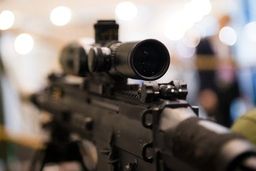
Knowing that no group is exempt, then we must begin preparation with the need for situational awareness anytime we are in a group setting. Like the term terrorism, there are many definitions of situational awareness, ranging from the academic to common sense. Boiling these numerous definitions down to the key elements as they relate to mass attacks, situational awareness means to be alert to your environment, the activities, and persons within that environment, and using your unimpeded senses to detect any form of threat that is present or likely to surface.
If you are with friends or family, it may fall to you to be the responsible person practicing situational awareness when in any group setting. Your small group might consist of children, a disabled individual, or elderly parents/grandparents not fully capable of situational awareness and knowing how to survive. You must be their eyes and ears and know what to do, should the unthinkable happen.
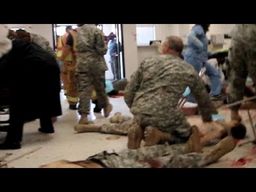
The Fort Hood Massacre, 5 November 2009
– inside the room where the shooting began,
13 lost their lives and 33 were wounded.
What if an attack is clearly imminent or has started? At least for active shooter cases, the City of Houston developed a video describing how to respond. Their slogan with video, Run, Hide, or Fight® is copyrighted (Ready Houston, 2014).1 The slogan is also endorsed by the FBI and the Department of Homeland Security. The slogan, Run, Hide, or Fight, is in order of priority if caught in an attack. The better response is to run. If running is not possible, then hide. Lastly, if there is no other option, then fight.
I choose to elaborate on the Run, Hide, Fight slogan, based upon experience and much study of mass attacks. This includes extending the approach from active shootings to mass victim attacks. I use Escape, Hide, Stay-In-Place, and Attack Back in place of Run, Hide, and Fight for a number of reasons. First, to run is not specific. You could clearly be running into more danger or threats. Second, to hide is not a guarantee. There have been numerous attacks where a large number of victims were found in restrooms in public places – with no exits – only to be fatally shot by the attacker.
Third, fight is not specific enough. How do you fight an armed assailant with one or two semi-automatic weapons and with extended magazines who is charging you, or an attacker with a swinging machete, or an attacker driving a truck over innocent victims? In response, I provide the following suggestions and definitions.
- Escape. Escape is the act of leaving a threatening situation to a location of safety. This should always be the number one objective. Escape as quickly as possible to a place of safety. Know where you are running to.
- Hide. To hide is to place an obstacle or obstacles between you and an attacker, preventing line-of-sight or likely location. This is a second option in terms of priority; but it should be a temporary option as you continually seek a way to escape.

- Stay-In-Place. This is never to be used, except on very rare occasions. One example of an exception when staying-in-place is warranted is the aftermath of a small-scale explosion and only if one is not severely injured. If one runs, they could be running into the attacker or a second bomb (g., Boston Marathon bombing had two bombs a block apart, exploding less than 20 seconds apart).
- Attack Back. Know yourself! You will be facing a heartless attacker who is not phased by victims of any age, disability, fear, or gender and is well-armed. Attack back means that escape, hiding, and stay-in-place are not options. There simply is no other choice. There is no nice way to say this. Your objective is not to fight. If you are trapped by an attacker with no chance of escape and you are clearly targeted with a gun, knife, etc. and you must attack the attacker, your goal is to kill before you are killed – it is not to just fight. The attacker is armed, and the intent is to kill you. Go for highly vulnerable body locations such as the eyes, ears, throat, and groin.
Life-Saving Tips
Although there is much detail involved in surviving mass attacks and this article is limited in space, I refer you to much more detail (Jackson, 2018).2 However, I will provide some of the more essential life-saving tips here.
- Know First Aid! It can save lives in any situation and may even save your own. Take a course and have family members take it with you.
- Most public places have exits as a means to escape – know them and how to use them. Almost all stores (even in malls), restaurants, bars, grills, etc. have multiple exits, including back exits/entrances used for deliveries. For example, if in a mall, do not escape to main entrances but escape through the nearest store. There are also obstacles to use for hiding as you make your way to an exit door.
- The purpose of hiding should only be temporary. Keeping out of line of sight is the objective but do it as you escape away from a threatening situation. Grab whatever you can on the way that could be used as a lethal weapon to defend yourself and others, should attacking back become the only option.
- When in a public place, keep your senses clearly open so that situational awareness can work. This means not wearing ear buds while listening to smart phone attractions and no texting or watching smart phone displays of any kind. You need full attention to your surroundings. This is especially true in such public gathering places as restaurants, bar, malls, and stores.
- Know that gunshots can sound very different than what we see on TV or in the movies. After numerous multiple mass victim attacks, survivors state that at first, they thought the sounds of a gun were firecrackers. This delayed their escape response. If loud “popping” sounds in public occur, escape. Waiting can result in the loss of valuable lifesaving seconds.
- Carry a portable personal protection device such as pepper spray or a pocketknife. Portable pepper sprayers are available in may stores and online – our local car wash even sells them. They are legal and can fit in a pocket or purse, can reach 15 feet, and can debilitate an attacker allowing time to escape.
- Know that mass attackers are prepared to die, either by suicide or by responders. They don’t care about crying, praying, or begging. They will not be deterred from their objective of massive death unless stopped.
- Vehicle run downs are, unfortunately, more commonplace now. Always walk facing traffic and be aware with no distractions (cell phones, etc.). Know that vehicle rundown attacks often end with attackers exiting vehicles and continuing the attack with sharps or guns.
- Be aware in public settings if someone enters who appears inappropriate as compared to the group. As an example, he or she could be wearing a long coat to hide weapons when the temperature is warm, and no others are dressed in this manner. Remember, an attacker is determined to kill many and even die in the process. Although others may be happy or having a good time, the attacker’s expression will be somber, at best. Begging, pleading, or trying to reason with an attacker simply does not work. The attacker will not be deterred from his mission of killing.
- If you are hiding, turn off the ringer on your cell phone. It can give away your location.
- If you fear being known for reporting a person or you have fear of retribution, report anonymously. Take time to check local law enforcement to determine how anonymous reporting can occur. Anonymous reporting is better than no reporting. You can always use a throwaway phone. They are prepaid, cost around $10, and can be discarded.
- Do not stand behind a door when an active shooter is approaching or shooting – bullets can easily penetrate most doors.
- If your post attack distress is severe, seek help. Confide in your doctor or a mental health professional to seek assistance.
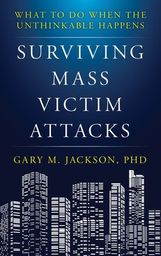
The bottom line is that being aware in public places simply means taking precautions. Know where the exits are. Look for suspicious, out-of-place behavior. You do not have to live your life in fear, but you should live your life prepared when in public. This is especially true if you are with friends or family. They are in your care.
References
- Ready Houston, Run, Hide, Fight ®, https://blog.readyhoustontx.gov/post/93123303217/run-hide-fight,
- Jackson, G.M. Surviving Mass Victim Attacks: What to Do When the Unthinkable Happens, Rowman and Littlefield, 2018.
ABOUT THE AUTHOR

Dr. Gary M. Jackson is the CEO and President of ANBECO, LLC. Trained as a behavioral psychologist with specialties in artificial intelligence and automated assessment, Dr. Jackson has designed and developed scores of advanced applications across both corporate and U.S. Government settings. Dr. Jackson’s career has spanned academia as a professor, director of Research and Development, and treatment development in various clinical settings, research psychologist within the U.S. Secret Service Intelligence Division, Intelligence Officer and Chief of three advanced technology branches within the Central Intelligence Agency, vice president and director of research and development for a major psychological test development company, Director of the Center for the Advancement of Intelligent Systems (CAIS) for the American Institutes for Research and, the founding President and CEO of Psynapse Technologies in Washington DC. Dr. Jackson has extensive R&D and operational field experience in counterterrorism, counterintelligence, counter-narcotics, and asymmetric warfare prediction, tracking, and locating. He holds BA and PhD degrees from Southern Illinois University-Carbondale and an MA degree from University of Illinois-Springfield. He has completed additional postdoctoral training in neurophysiology at the University of South Florida Medical School. Dr. Jackson is the inventor of the patented automated behavior assessment Checkmate Network Intrusion Protection System, Inmate Network Misuse Detection System for insider threat assessment, and Automated Behavior Analysis (AuBA) technology and tools. His latest books: Predicting Malicious Behavior: Tools and Techniques for Ensuring Global Security (Wiley & Sons, 2012), describes the developed and patented automated behavior analysis (AuBA) and applications. Surviving Mass Victim Attacks: What to Do When the Unthinkable Happens (Rowman & Littlefield, 2018) describes mass victim attacks and strategies for surviving and prevention.
Combat Stress Magazine
Combat Stress magazine is written with our military Service Members, Veterans, first responders, and their families in mind. We want all of our members and guests to find contentment in their lives by learning about stress management and finding what works best for each of them. Stress is unavoidable and comes in many shapes and sizes. It can even be considered a part of who we are. Being in a state of peaceful happiness may seem like a lofty goal but harnessing your stress in a positive way makes it obtainable. Serving in the military or being a police officer, firefighter or paramedic brings unique challenges and some extraordinarily bad days. The American Institute of Stress is dedicated to helping you, our Heroes and their families, cope with and heal your mind and body from the stress associated with your careers and sacrifices.

Leave A Comment
You must be logged in to post a comment.